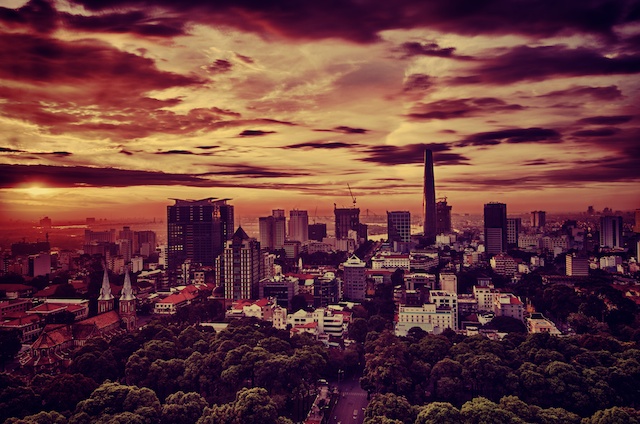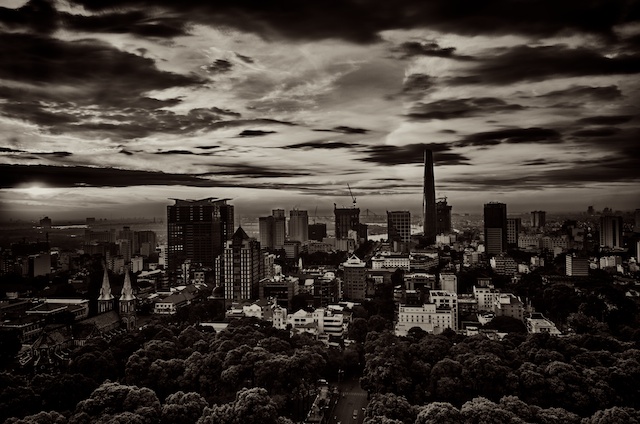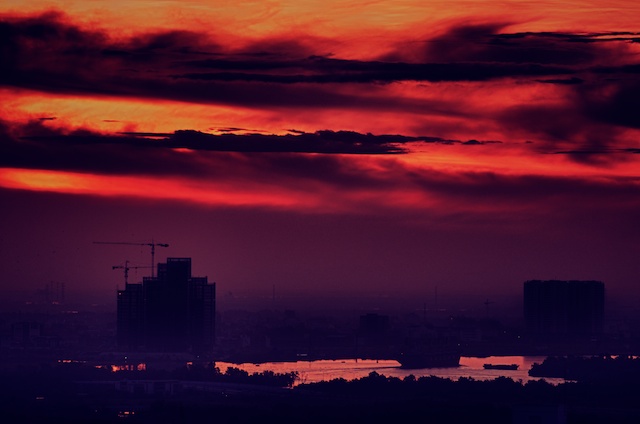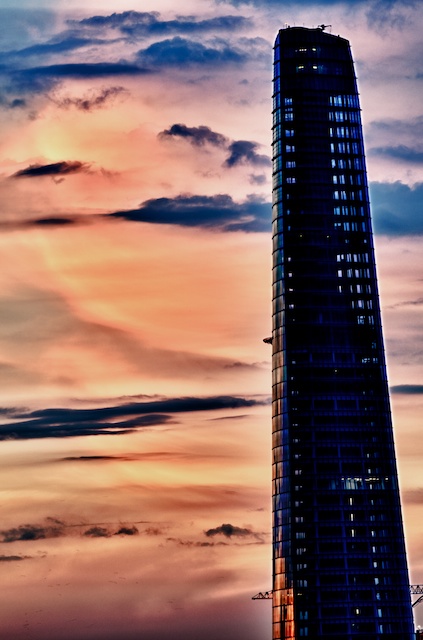It’s 5am. Been a breeze to get to the location. Getting up to 23rd floor took longer. The security guard took us the wrong way, we got locked out in the emergency staircase and had to walk down to the 18th floor before ascending again. As the horizon started to gain colour tones we quickly set up.
I was bracketing my captures. Wanted to try something new to me. HDR, or rather High Dynamic Range, enables you to capture a wider range of tones and will often look surreal as we are not used to see such a wide tonal range.
The technique has been around for awhile, the concept started in 1850 according to Wikipedia.
Purists will often dislike the HDR images and forums are filled with either love or hate for them. I am more pragmatic. I want to see what I can achieve. How new software can add a different touch. Best way is to start experimenting.
Just like our language is developing, expanding our vocabulary with new invented words, the visual language of photography continues to evolve too. All mostly driven by technology. Old school way would be to use gradient filters to control the tonal range when faced with extreme values. A sunrise is a good example. You want to preserve the details of the sky as well as the foreground. These days, bracketing and a computer are your best friends.
Looks, mood and treatment are all words that keep popping up. Before, you would spend time analysing what type of filters to use. What type of film to use. What type of processing method to use. Last, but not least, how you would work with your lights, setting it all up. The production stage took longer to complete. Fast forward and more time is spent on post production.
HDR is a new language to me, a language I am teaching myself to use. Exploring what is is capable of doing. Testing it to extremes to see what will happen and what you can get out of it. Not that you will use it everyday and all the time, but you need to have the knowledge. Knowledge is always important. To know what you can do. To know the limitations. To know the workflow. To know how to get things done.
It is always better to tell a client that a particular task cannot be done, however, you can do either A or B and that will cost X amount extra to implement. The worst you can do is to say you will sort it out later and not knowing how it is done.
Clients will always respect you if they are told upfront what can be done and what cannot. Limit their expectations and you can surprise them afterwards. Always manage expectations. Never promise something you cannot deliver. There are things you can save in post production, however, remember that post can be very time consuming and hence an expensive solution to something that could have been addressed at the capture stage.
Getting it right in camera is still valid.
Enjoy the experiments as the sun rises over Saigon!






Stunning view of Saigon! May I know where the viewpoint is?
Thanks! It is taken from the roof top of Sailing Tower, District 1.